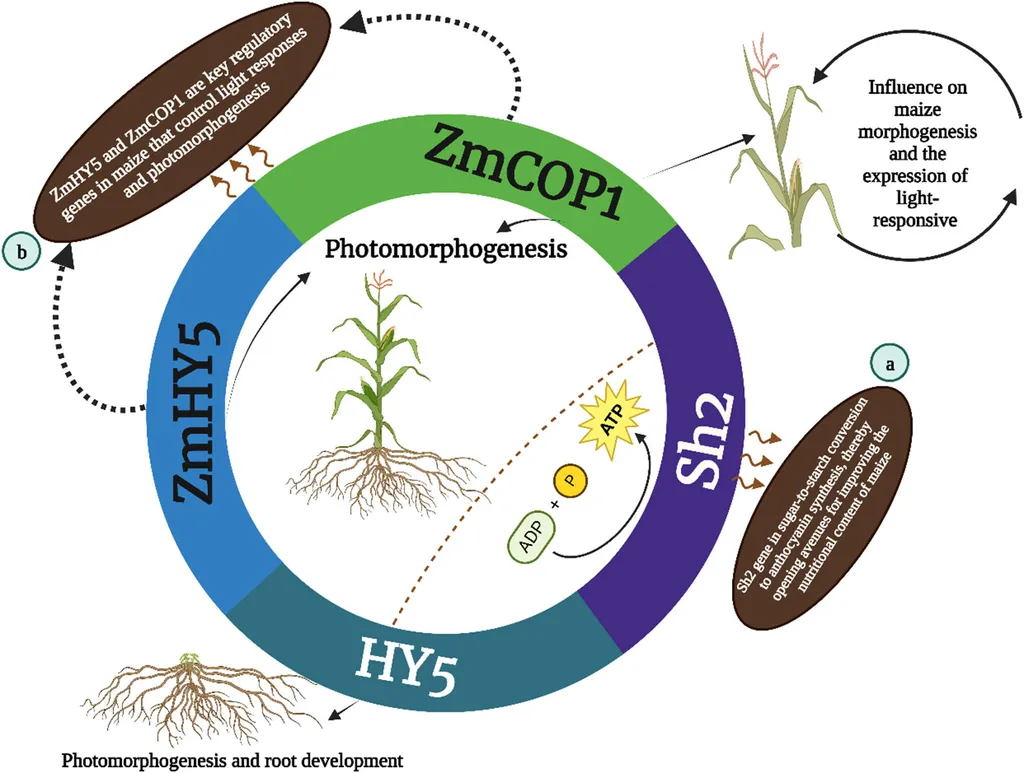In the quest to enhance maize resilience to low phosphorus (LP) conditions, a groundbreaking study led by Wang Tang from the State Key Laboratory of Maize Bio-Breeding at China Agricultural University has uncovered a fascinating link between anthocyanin synthesis and photosynthetic carbon partitioning. Published in the journal ‘Plants’ (translated as ‘Plants’), this research could revolutionize maize breeding strategies and offer significant commercial impacts for the energy sector.
Maize, a staple crop worldwide, often faces environmental stresses that hinder its growth and productivity. One such stress is low phosphorus availability, which can significantly reduce crop yields. Wang Tang and his team set out to investigate how different maize cultivars respond to LP stress, focusing on the role of anthocyanins (ACNs), flavonoid pigments known for their antioxidant properties.
The study involved six representative maize cultivars, which were hydroponically cultured under both control and LP conditions. The researchers quantified ACNs content, photosynthetic parameters, plant relative growth ratio, and tissue-specific carbohydrates. Their findings revealed that LP stress reduced photosynthesis and biomass but stimulated ACNs biosynthesis in leaves and sheaths.
Crucially, the team classified the cultivars into ACN-sensitive and ACN-insensitive groups based on ACNs accumulation in newly unfolded leaves and corresponding sheaths. ACN-sensitive cultivars exhibited higher ACNs levels, which correlated positively with soluble sugars but negatively with starch reserves. This suggests a preferential carbon partitioning towards ACNs precursors rather than starch.
“Our results indicate that ACN-sensitive cultivars maintain higher relative growth ratios under LP conditions,” explained Wang Tang. “This is associated with less photosynthesis decline and starch accumulation compared with ACN-insensitive cultivars. We hypothesize that ACNs synthesis functions as a diversion of photo-assimilates into secondary metabolism under LP, thereby improving photosynthetic efficiency by mitigating excess sugar accumulation that could impair plant growth.”
This carbon-partitioning adaptation could be a game-changer for maize breeding programs. By selecting for ACNs accumulation, breeders could enhance maize resilience to LP, potentially increasing yields and reducing the need for phosphorus fertilizers. This not only benefits farmers but also has significant implications for the energy sector, as maize is a crucial feedstock for biofuels.
The study’s findings open up new avenues for research and development in the field of crop science. As Wang Tang noted, “Understanding the mechanisms behind ACNs synthesis and its role in carbon partitioning could lead to the development of more resilient maize cultivars, better adapted to environmental stresses.”
In conclusion, this research highlights the importance of anthocyanin synthesis in maize’s response to low phosphorus stress and its potential impact on photosynthetic carbon partitioning. By leveraging these insights, the agricultural and energy sectors could see significant advancements in crop resilience and biofuel production. The study, published in ‘Plants’, offers a promising pathway for future developments in maize breeding and beyond.

